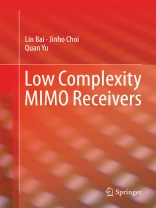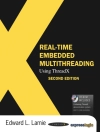Multiple-input multiple-output (MIMO) systems can increase the spectral efficiency in wireless communications. However, the interference becomes the major drawback that leads to high computational complexity at both transmitter and receiver. In particular, the complexity of MIMO receivers can be prohibitively high. As an efficient mathematical tool to devise low complexity approaches that mitigate the interference in MIMO systems, lattice reduction (LR) has been widely studied and employed over the last decade. The co-authors of this book are world’s leading experts on MIMO receivers, and here they share the key findings of their research over years. They detail a range of key techniques for receiver design as multiple transmitted and received signals are available. The authors first introduce the principle of signal detection and the LR in mathematical aspects. They then move on to discuss the use of LR in low complexity MIMO receiver design with respect to different aspects, including uncoded MIMO detection, MIMO iterative receivers, receivers in multiuser scenarios, and multicell MIMO systems.
Mục lục
Introduction.- Signal Processing at Receivers: Detection Theory.- MIMO Detection: Vector Space Signal Detection.- Successive Interference Cancellation Based MIMO Detection.- Lattice Reduction Based MIMO Detection.- MIMO Iterative Receivers.- Bit-Wise MIMO-BICM-ID using Lattice Reduction.- Randomized Sampling-based MIMO Iterative Receivers.- Iterative Channel Estimation and Detection.- Multiuser and Multicell MIMO Systems: The Use of Lattice Reduction.
Giới thiệu về tác giả
Dr. Lin Bai is an Associate Professor at School of Electronic and Information Engineering, Beihang University (University of Aeronautics and Astronautics, BUAA), Beijing, China.
Prof. Jinho Choi researches and teaches at Gwangju Institute of Science and Technology in South Korea.
Prof. Quan Yu is a Research Fellow at the Institute of China Electronic System Engineering Corporation. He is an Academician of Chinese Academy of Engineering (CAE).












